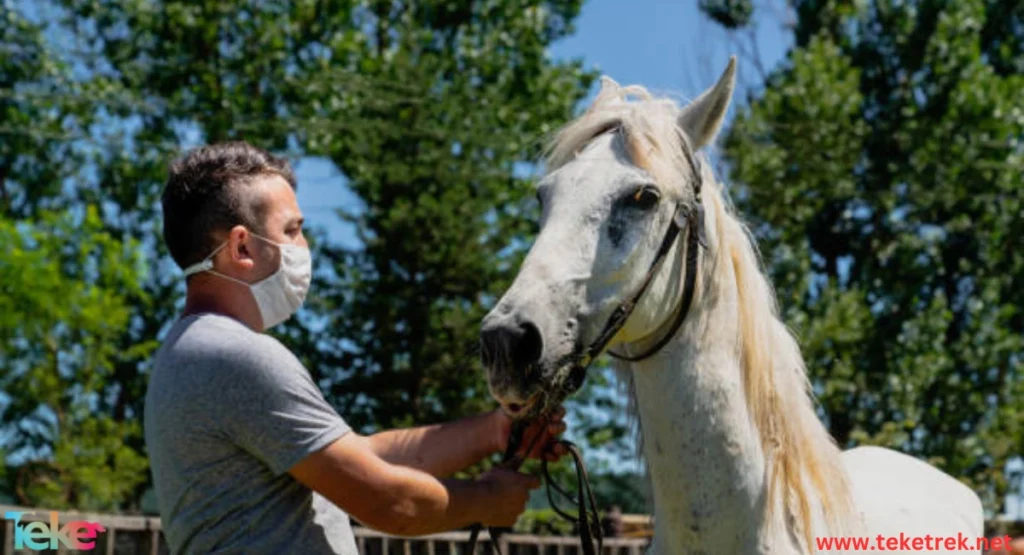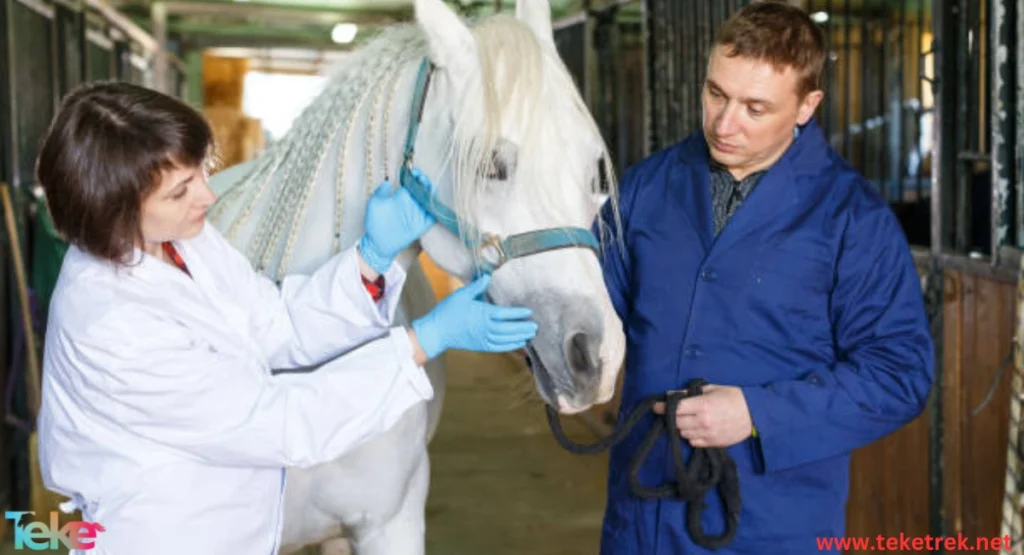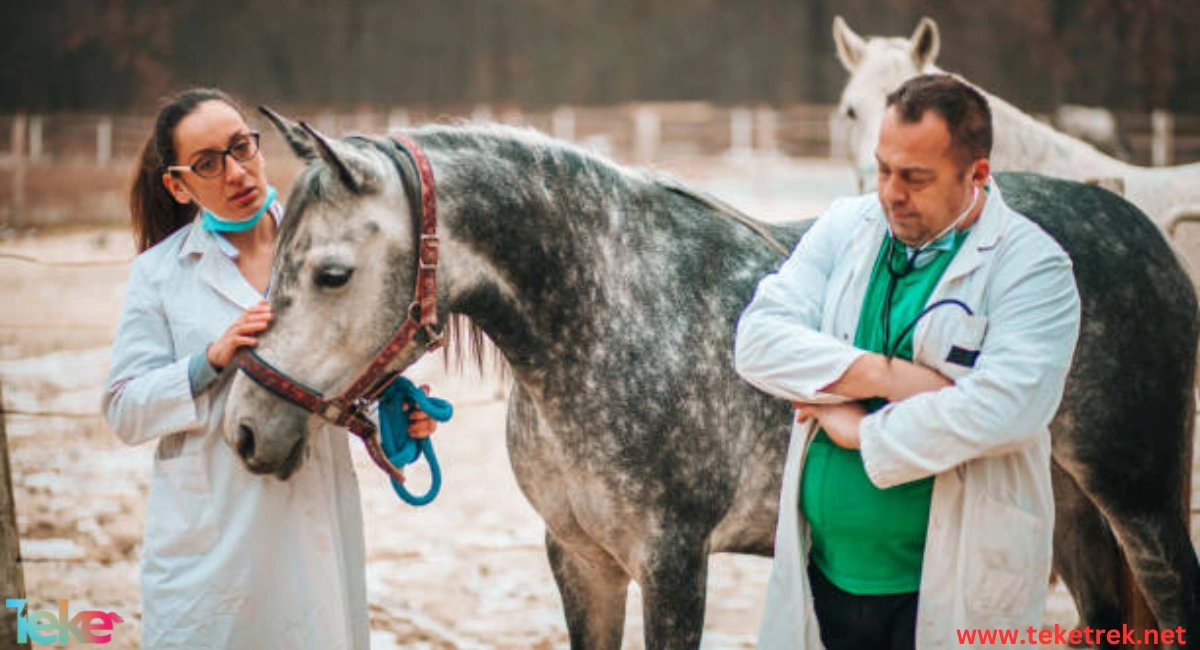Equestrian flu is a disease caused by strains of influenza and this disease is one of the most dangerous diseases that affect horses, because it is a fatal disease. There are some countries that are famous for it, including Egypt, especially in certain governorates such as Qalyubia, Sharkia, Cairo, Giza, Alexandria and Aswan. The disease affects horses, mules, donkeys, camels, as well as the striped type of donkeys, as well as dogs. This disease is dangerous if it is not discovered and treated early. It will lead to the death of many horses because it spreads quickly and is very effective.
Continue reading this article from teketrek.
What are the symptoms of horse flu?
Equestrian flu is a dangerous, highly contagious and rapidly spreading disease that was identified in the eighteenth century. This disease is endemic in almost all countries of the world except New Zealand and Iceland. Despite the seriousness of this disease, it does not pose a danger to humans, but it may harm some other animals such as donkeys, mules and dogs.
Causes of the spread of horse flu
Equestrian flu is originally a virus that infects horses, but it is type A. This type has two states, H7N7 and H3N8. This virus appears in the form of an epidemic every few years as a result of a horse infected with one of the horse flu viruses entering the country and does not show any symptoms of the disease. After the horses gather in one area and become infected, they lack immunity against this virus. The cause of horse flu may be due to the genes of this type of virus, which makes it strange to the immune system and the immune system does not recognize it. Accordingly, this causes horses to become infected with it despite their previous vaccination.
The incidence of this influenza in horses increases among young horses, old horses, weak horses, and donkeys. The incidence of the disease ranges from 60% to 90% in unvaccinated horses. Unvaccinated horses are those that have not been exposed to the virus before, so the incidence rate increases. The mortality rate in sick horses ranges from one to 10% and rarely reaches 20%. What is worrying about equine influenza is that it has become transmitted directly between dogs, which is a dangerous precedent in the event of a mutation of any of the other influenza viruses, as the virus is transmitted from one type to another, unlike what happened in the case of the bird flu virus.

Common symptoms of equine influenza and how to identify it
When horses are infected with influenza, they show several symptoms, and you can clearly notice these symptoms through the following:
- A rise in temperature to 39 or 41.
- General lethargy in the horse and its movement is slow.
- Lack of appetite for food, especially when the temperature rises to more than 40 degrees Celsius.
- Dry cough and watery discharge from the nose.
- The color of the infected person changes to yellow after several days.
- Swollen lymph nodes in the face and under the jaws may appear in some horses that suffer severely from it for a short period, or for a longer period of time, and colic or swelling of the legs rarely appears.
- Young mothers and elderly and weak horses suffer from difficulty breathing and stiffness of the limbs.
https://teketrek.net/en/everything-you-want-to-know-about-the-marine-predator-shark/
What is the treatment for horse flu?
Equestrian flu, despite its seriousness, may be cured in horses within two weeks, but it requires early diagnosis and then choosing the correct treatment for it. You can diagnose the disease by observing the symptoms we mentioned on horses, such as high temperature and coughing, poor appetite and frequent refusal of the horse to eat. The doctor must be brought immediately when any of these symptoms are observed to prescribe the appropriate treatment.
There is no definitive treatment for horse flu, but the doctor is consulted if symptoms appear so that the doctor can reassure the horse’s respiratory system. The doctor prescribes treatment according to the condition. If the horse suffers from a high temperature, he prescribes a fever reducer with cough suppressants. In the event of pneumonia due to complications of a bacterial infection, the doctor prescribes strong antibiotics that are suitable for the horse. If the temperature continues to rise for five days, the solution is antibiotics.
How to prevent and vaccinate horses
Knowing how to prevent equine influenza is the first and important step to maintaining the health of horses, as there are several vaccinations against the equine influenza virus, and although these vaccines prevent the symptoms of the disease from appearing on horses, they do not prevent the spread of the virus and its transmission to unvaccinated horses.
There are two different types of vaccines: a dead type that is injected into the horse’s neck, and a live type that is sprayed into the horse’s nose. The horse is given a first dose and after a few weeks it is given a booster dose after which the horse is immune to the equine influenza virus. These doses are repeated every six months if the horse is exposed to the virus, and if it is less exposed to it, they are repeated once a year. As for pregnant mares, they are given a booster dose at least six weeks before giving birth, and young horses are not vaccinated until after the age of six months.

The effect of the disease on horses and the speed of their recovery
Equine influenza greatly affects the health of horses and this disease is usually fatal to some horses if it is not detected early and treated. This disease is also fast-spreading and is transmitted from one horse to another through breathing and a runny nose, through the worker’s gloves and saddles or through the transfer of food and drinking utensils from one horse to another, so infected horses must be separated if they are confirmed to be infected. Although the virus is fast-spreading, it dies from high sunlight, heat, soap, and 70% alcohol, and remains alive for several days in water and one day in dirt.
After treatment is prescribed for the infected horse, the symptoms begin to gradually decrease and within days the horse is in good health, but sometimes the symptoms are very severe and complications begin to appear, then the treatment takes effect for at least a few weeks.
In the end, equine influenza is a serious disease and if it is not controlled, it will lead to the death of many horses because it spreads quickly. The expert committee works hard every year to detect About the mutation of the virus until a quick and effective treatment is developed for it. Early diagnosis is very important in treating horses quickly, so you must observe the horse and know its condition and bring the doctor if any symptoms occur. You must also commit to giving the horse the required vaccine within the specified period.





